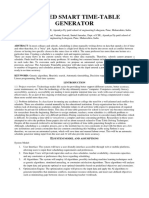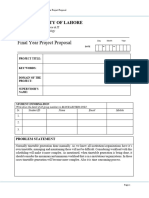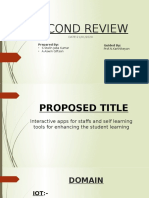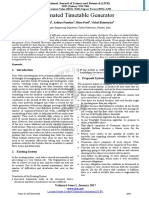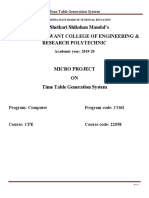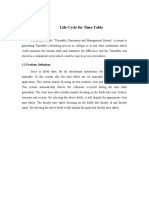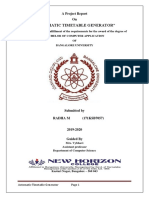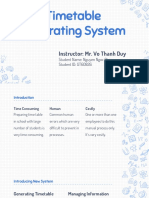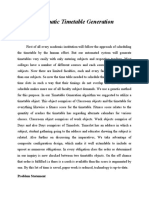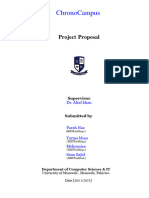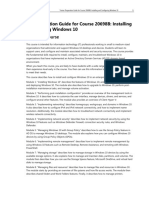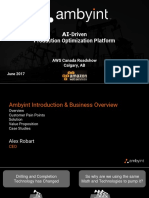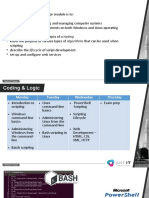0% found this document useful (0 votes)
36 views2 pagesSmart Time Table Generator System
The Smart Timetable Generator is an application designed for educational institutions to automate and manage timetable creation while considering various constraints and preferences. Key features include secure user authentication, subject and teacher management, automated timetable generation, conflict resolution, and a user-friendly interface. Future enhancements may include user roles, calendar integration, and machine learning for optimization.
Uploaded by
aham.brahmasmi0207Copyright
© © All Rights Reserved
We take content rights seriously. If you suspect this is your content, claim it here.
Available Formats
Download as PDF, TXT or read online on Scribd
0% found this document useful (0 votes)
36 views2 pagesSmart Time Table Generator System
The Smart Timetable Generator is an application designed for educational institutions to automate and manage timetable creation while considering various constraints and preferences. Key features include secure user authentication, subject and teacher management, automated timetable generation, conflict resolution, and a user-friendly interface. Future enhancements may include user roles, calendar integration, and machine learning for optimization.
Uploaded by
aham.brahmasmi0207Copyright
© © All Rights Reserved
We take content rights seriously. If you suspect this is your content, claim it here.
Available Formats
Download as PDF, TXT or read online on Scribd
/ 2
